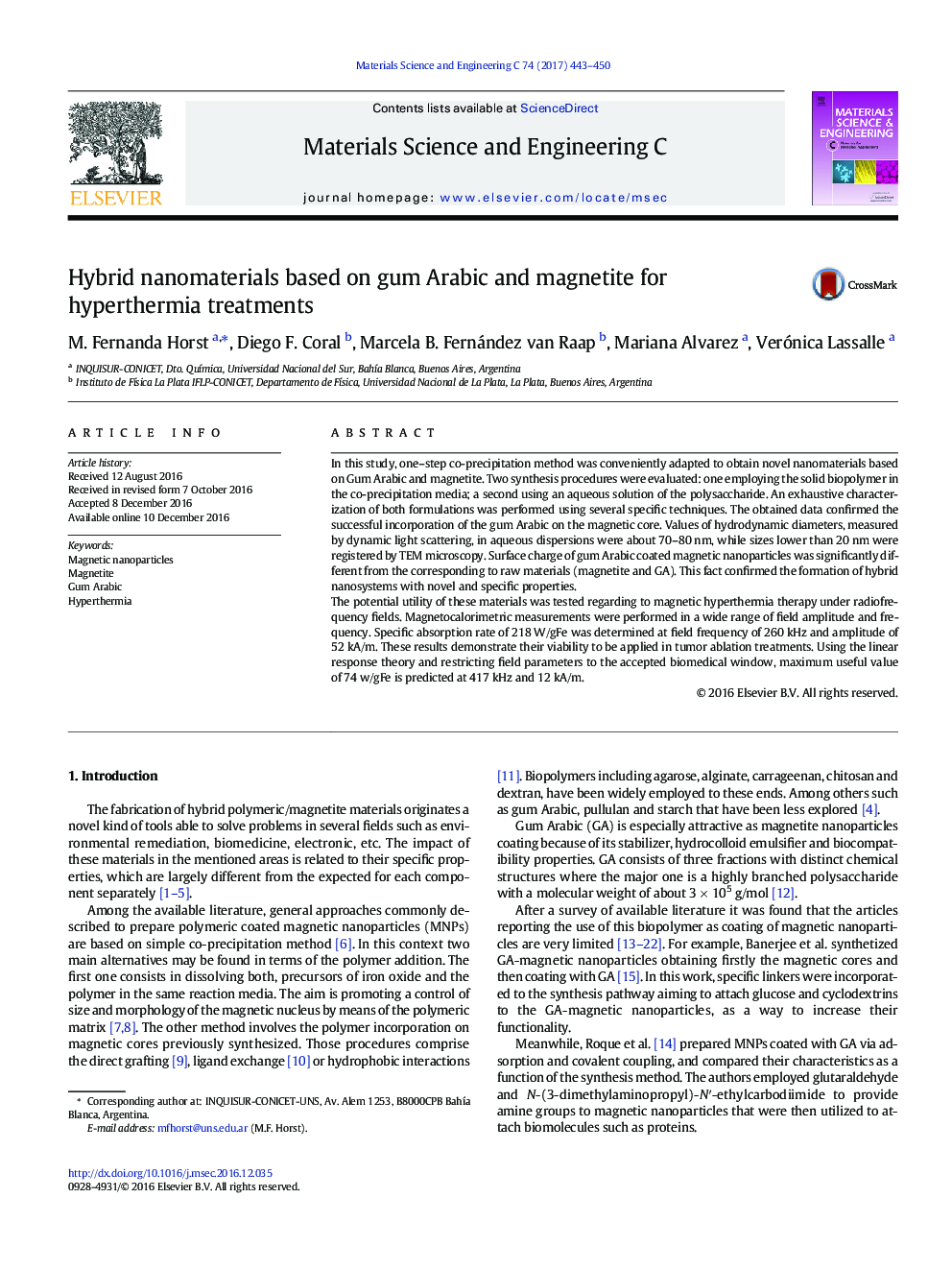| Article ID | Journal | Published Year | Pages | File Type |
|---|---|---|---|---|
| 5435045 | Materials Science and Engineering: C | 2017 | 8 Pages |
â¢Versatile methodology to obtain gum Arabic coated magnetic nanoparticlesâ¢Feasible mechanisms for gum Arabic-iron oxide interactionsâ¢Highly stable aqueous dispersionâ¢Suitable nanosystems for hyperthermia treatments
In this study, one-step co-precipitation method was conveniently adapted to obtain novel nanomaterials based on Gum Arabic and magnetite. Two synthesis procedures were evaluated: one employing the solid biopolymer in the co-precipitation media; a second using an aqueous solution of the polysaccharide. An exhaustive characterization of both formulations was performed using several specific techniques. The obtained data confirmed the successful incorporation of the gum Arabic on the magnetic core. Values of hydrodynamic diameters, measured by dynamic light scattering, in aqueous dispersions were about 70-80Â nm, while sizes lower than 20Â nm were registered by TEM microscopy. Surface charge of gum Arabic coated magnetic nanoparticles was significantly different from the corresponding to raw materials (magnetite and GA). This fact confirmed the formation of hybrid nanosystems with novel and specific properties.The potential utility of these materials was tested regarding to magnetic hyperthermia therapy under radiofrequency fields. Magnetocalorimetric measurements were performed in a wide range of field amplitude and frequency. Specific absorption rate of 218Â W/gFe was determined at field frequency of 260Â kHz and amplitude of 52Â kA/m. These results demonstrate their viability to be applied in tumor ablation treatments. Using the linear response theory and restricting field parameters to the accepted biomedical window, maximum useful value of 74Â w/gFe is predicted at 417Â kHz and 12Â kA/m.
